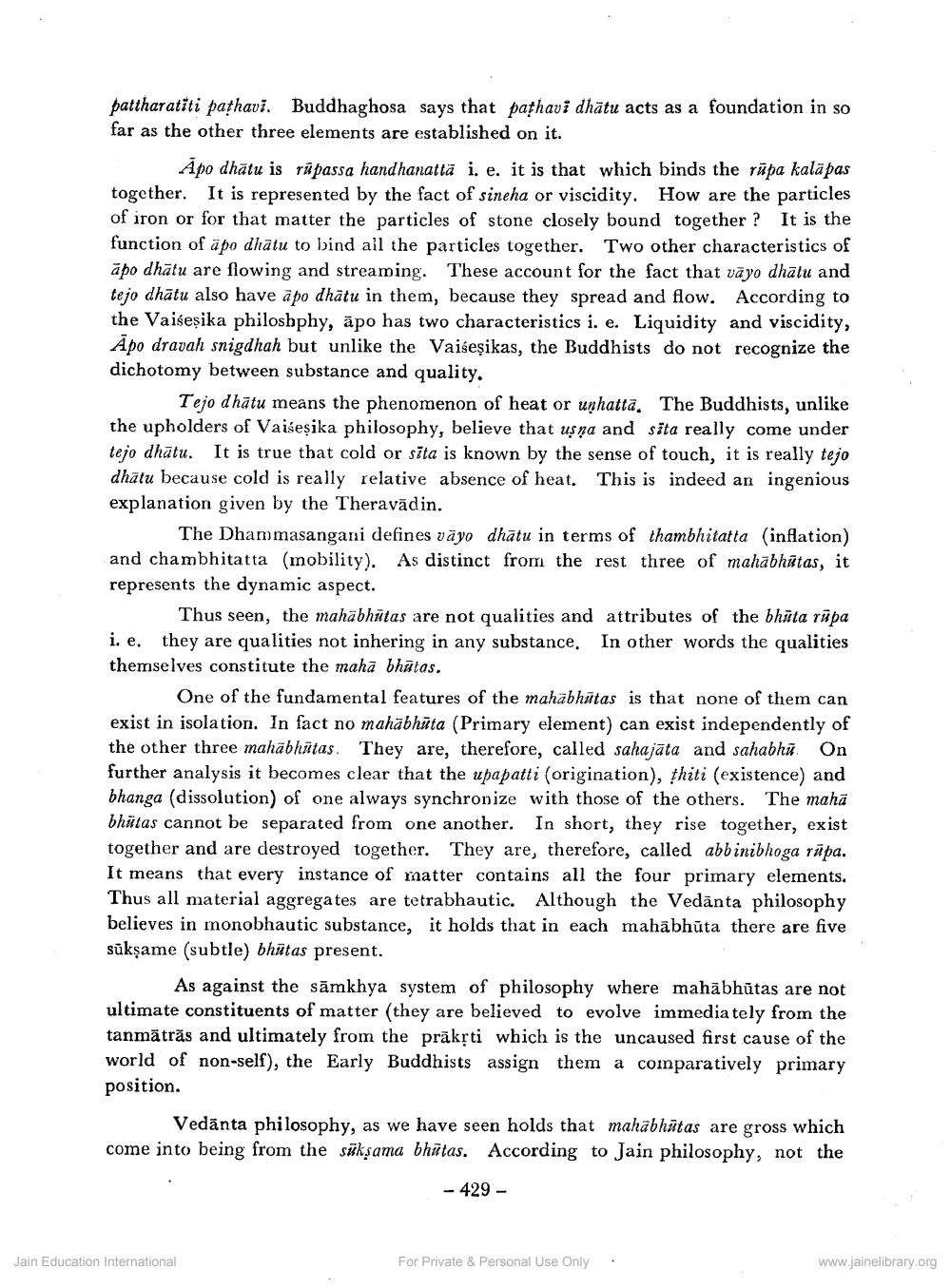Book Title: Concept of Matter in Lee Buddhism Author(s): Angraj Chaudhary Publisher: Z_Kailashchandra_Shastri_Abhinandan_Granth_012048.pdf View full book textPage 4
________________ pattharatiti pathavi. Buddhaghosa says that pathavi dhātu acts as a foundation in so far as the other three elements are established on it. Apo dhātu is rūpassa handhanatta i. e. it is that which binds the rüpa kalapas together. It is represented by the fact of sineha or viscidity. How are the particles of iron or for that matter the particles of stone closely bound together? It is the function of apo dhātu to bind all the particles together. Two other characteristics of apo dhātu are flowing and streaming. These account for the fact that vāyo dhātu and tejo dhātu also have apo dhātu in them, because they spread and flow. According to the Vaiseșika philosbphy, āpo has two characteristics i. e. Liquidity and viscidity, Āpo dravah snigdhah but unlike the Vaiseşikas, the Buddhists do not recognize the dichotomy between substance and quality. Tejo dhātu means the phenomenon of heat or unhatta, The Buddhists, unlike the upholders of Vaiseșika philosophy, believe that uşņa and sāta really come under tejo dhātu. It is true that cold or sita is known by the sense of touch, it is really tejo dhātu because cold is really relative absence of heat. This is indeed an ingenious explanation given by the Theravadin. The Dhammasangani defines vāyo dhātu in terms of thambhitatta (inflation) and chambhitatta (mobility). As distinct from the rest three of mahābhūtas, it represents the dynamic aspect. Thus seen, the mahābhūtas are not qualities and attributes of the bhūta rūpa i. e. they are qualities not inhering in any substance. In other words the qualities themselves constitute the maha bhūtas. One of the fundamental features of the mahābhūtas is that none of them can exist in isolation. In fact no mahābhūta (Primary element) can exist independently of the other three mahābhūtas. They are, therefore, called sahajāta and sahabhū. On further analysis it becomes clear that the upapatti (origination), thiti (existence) and bhanga (dissolution) of one always synchronize with those of the others. The maha bhūtas cannot be separated from one another. In short, they rise together, exist together and are destroyed together. They are, therefore, called abbinibhoga rūpa. It means that every instance of matter contains all the four primary elements. Thus all material aggregates are tetrabhautic. Although the Vedānta philosophy believes in monobhautic substance, it holds that in each mahābhūta there are five sūkşame (subtle) bhūtas present. As against the sāmkhya system of philosophy where mahābhūtas are not ultimate constituents of matter (they are believed to evolve immediately from the tanmātrās and ultimately from the prākřti which is the uncaused first cause of the world of non-self), the Early Buddhists assign them a comparatively primary position. Vedānta philosophy, as we have seen holds that mahābhūtas are gross which come into being from the sükşama bhūtas. According to Jain philosophy, not the - 429 - Jain Education International For Private & Personal Use Only . www.jainelibrary.orgPage Navigation
1 2 3 4 5 6 7 8
